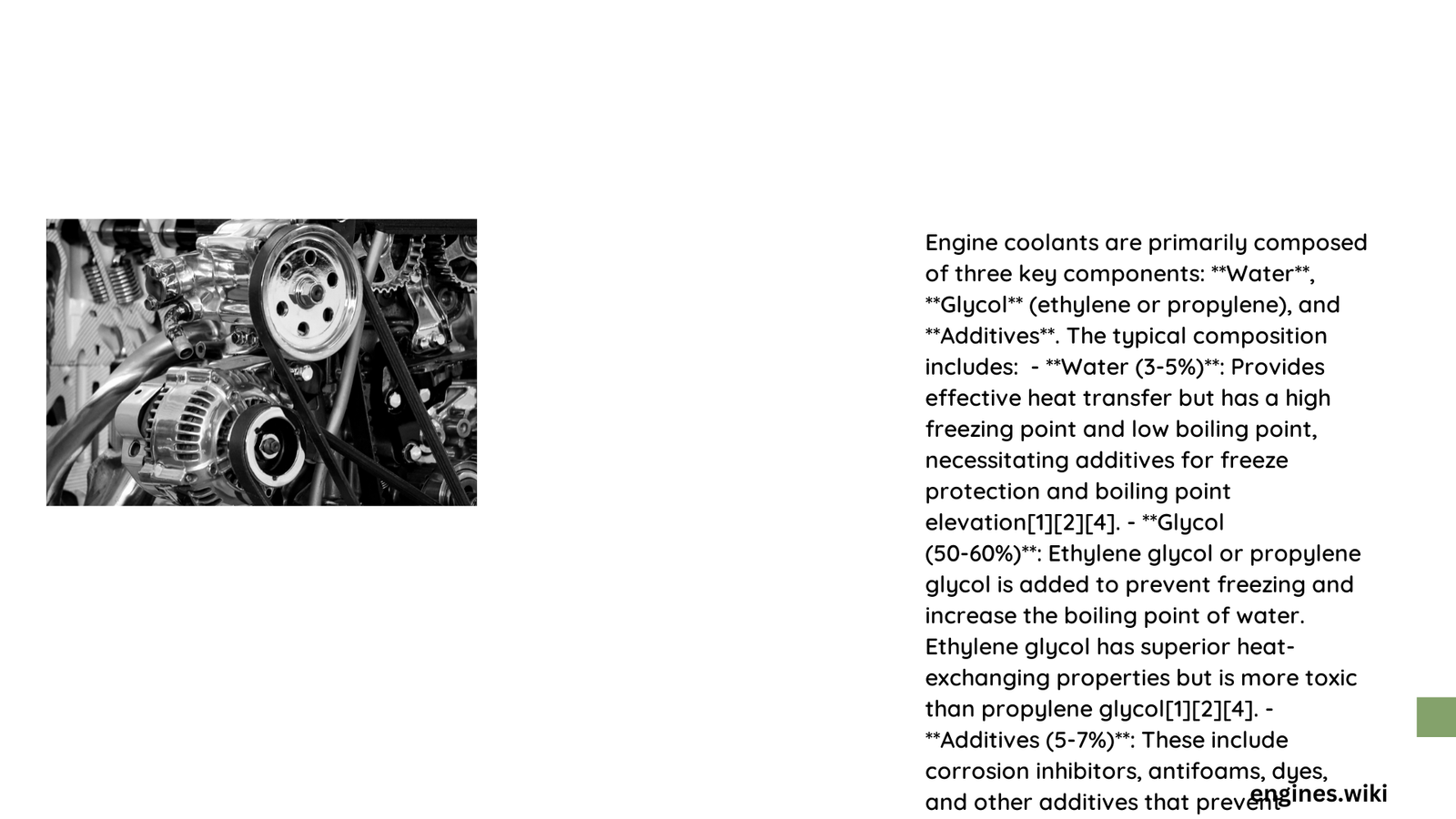Engine coolants are sophisticated liquid formulations designed to regulate engine temperature, prevent freezing, and protect critical metal components. These specialized fluids combine chemical compounds like ethylene glycol or propylene glycol with complex additive packages, ensuring optimal thermal management and corrosion prevention across diverse automotive applications.
What Are the Primary Chemical Components of Engine Coolants?
Ethylene Glycol: The Traditional Coolant Base
Ethylene glycol represents the most common coolant foundation, characterized by its exceptional thermal properties and widespread industrial adoption. Key characteristics include:
- Composition: 90-95% pure ethylene glycol
- Freezing Point: Drops to approximately -35°C in 50/50 water mixture
- Boiling Point: Elevated to around 105°C
- pH Range: Neutral to slightly basic (7.0-8.5)
Propylene Glycol: The Environmentally Friendly Alternative
Propylene glycol emerges as a less toxic alternative with comparable performance metrics:
- Composition: 40-60% propylene glycol
- Freezing Point: Reaches -40°C in balanced mixture
- Boiling Point: Stabilizes around 100°C
- Environmental Impact: Significantly lower toxicity profile
What Roles Do Additives Play in Coolant Performance?

Corrosion Inhibitor Mechanisms
Corrosion inhibitors form critical protective layers on metallic surfaces, preventing degradation through strategic chemical interactions:
| Inhibitor Type | Concentration | Primary Function |
|---|---|---|
| Silicates | 0.5-2% | Metal surface protection |
| Phosphates | 0.5-2% | Mineral deposit prevention |
| Carboxylates | 1-3% | Extended system longevity |
Additional Specialized Additives
- Defoaming Agents: Prevent foam formation (0.01-0.5%)
- pH Stabilizers: Maintain optimal chemical balance
- Color Indicators: Facilitate visual identification
- Bittering Compounds: Discourage accidental ingestion
How Do Coolant Colors Indicate Composition?
Color Classification System
- Green: Traditional silicate-based coolants
- Orange/Red: Organic Acid Technology (OAT) formulations
- Blue/Purple: Specialized hybrid compositions
- Yellow: Extended-life coolant variants
What Factors Influence Coolant Selection?
Critical Evaluation Parameters
- Engine Material Compatibility
- Manufacturer Specifications
- Operating Temperature Range
- Maintenance Interval Requirements
- Cost-Effectiveness
Recommended Replacement Intervals
- Conventional Coolants: Every 2 years
- OAT/Hybrid Coolants: Up to 5 years
Technical Considerations for Optimal Performance
Compatibility Warning
❗ Critical Advisory: Never mix different coolant types, as this can cause:
– Chemical destabilization
– Reduced thermal efficiency
– Potential system damage
– Voided manufacturer warranties
Performance Metrics Comparison
| Coolant Type | Freeze Protection | Boil Protection | Corrosion Resistance |
|---|---|---|---|
| Ethylene Glycol | Excellent | High | Good |
| Propylene Glycol | Very Good | Moderate | Better |
Emerging Trends in Coolant Technology
Future Development Directions
- Biodegradable formulations
- Enhanced thermal conductivity
- Reduced environmental impact
- Nanotechnology integration
Precision Engineering Recommendations
- Always consult vehicle manufacturer specifications
- Perform regular coolant system diagnostics
- Monitor coolant condition during routine maintenance
Conclusion
Understanding engine coolant types and composition requires comprehensive technical knowledge. Selecting the appropriate coolant involves balancing chemical properties, environmental considerations, and specific automotive engineering requirements.
